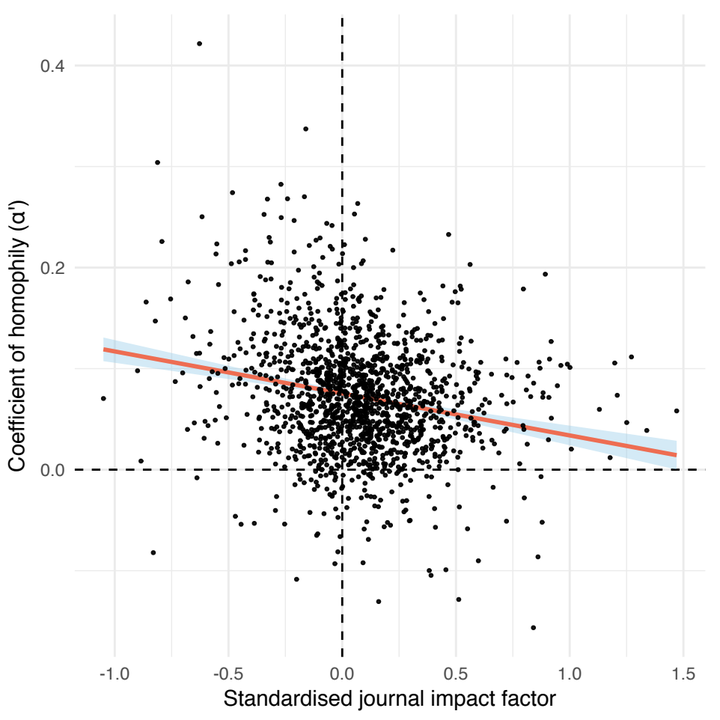Researchers collaborate with same-gendered colleagues more often than expected across the life sciences
 Journals with a larger excess of same-gender collaborations tend to have lower impact factors.
Journals with a larger excess of same-gender collaborations tend to have lower impact factors.
Abstract
Evidence suggests that women in academia are hindered by conscious and unconscious biases, and often feel excluded from formal and informal opportunities for research collaboration. In addition to ensuring fairness and helping to redress gender imbalance in the academic workforce, increasing women’s access to collaboration could help scientific progress by drawing on more of the available human capital. Here, we test whether researchers tend to collaborate with same-gendered colleagues, using more stringent methods and a larger dataset than in past work. Our results reaffirm that researchers co-publish with colleagues of the same gender more often than expected by chance, and show that this `gender homophily' is slightly stronger today than it was 10 years ago. Contrary to our expectations, we found no evidence that homophily is driven mostly by senior academics, and no evidence that homophily is stronger in fields where women are in the minority. Interestingly, journals with a high impact factor for their discipline tended to have comparatively low homophily, as predicted if mixed-gender teams produce better research. We discuss some potential causes of gender homophily in science.